The Very Large Array
Monday, 26th January 2009 by Ian Brown
Sprawled across the Plains of San Augustin in New Mexico is the Very Large Array - a Y-shaped radio astronomy observatory made up of 27 independent dish antennas.
The scale of the VLA operation is quite remarkable- each dish is 25m across and weighs 209 tonnes. They travel on train tracks which make up each of the three 21km arms of the array. A specially designed locomotive maneuvers the antennas into different configurations for specific observations.
The 27 antennas effectively provide the imaging capability of an antenna 36km wide, with the sensitivity of a dish 130m across. This allows the study of the sun, planets, black holes, pulsars, quasars and myriad other astronomical objects.
Construction was started in 1973 and completed - $78.5million later - in 1980. Currently, new hardware is being installed to improve the capabilites of the observatory - making it the Expanded Very Large Array, and funding is sought to add further dishes across the state to expand the system even further.
The VLA has featured in several movies including Contact, Independence Day and 2010: Odyssey Two.
It was apparently a location of interest for the driver of the Street View Car. Not content to pass by on Highway 60, which crosses the tracks, but without a good view of any dishes ...
... a detour was taken down Old Highway 60, past a great view of many dishes, to the point where it reaches the tracks directly beneath one of the dishes.
Google Sightseeing has covered all sorts of telescopes in the past, some of which have received great image updates since they were first posted.
Thanks to the many readers who suggested this one: james v, Stilt, Tim, Matt, Jonathan Hoppe, Benjamin, Benjamin, Doug Hershberger, Jarrod Lombardo, Leandro Garcia, Glenn, Trevor, Derek and Yablo.
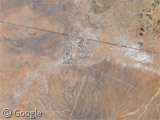
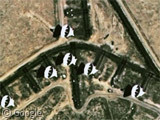
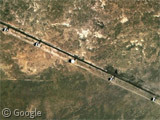
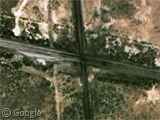
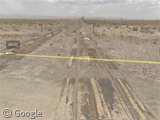
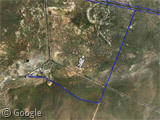
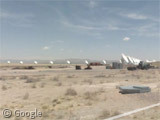
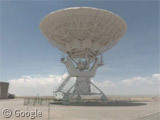
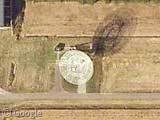

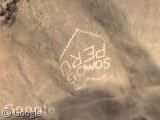
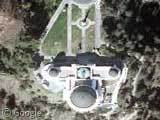
I just visited the VLA on a trip to the southwest last summer. It was a fun stop.
I don’t know where my life would be without a Y-shaped radio astronomy observatory made up of 27 independent dish antennas, each dish being 25m across and weighing 209 tonnes that travel on train tracks which make up three 21km arms with specially designed locomotives that maneuver the antennas while providing the study of the sun, planets, black holes, pulsars, quasars and myriad other astronomical objects and costing only $78.5million. What can I say? I’m just high maintenance I guess.